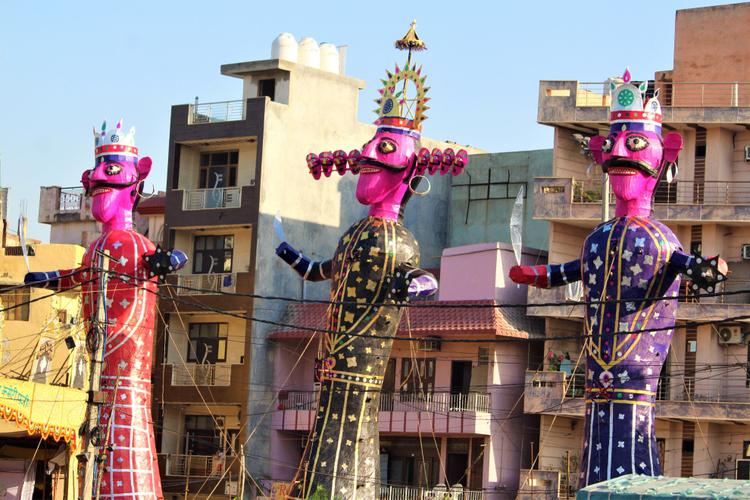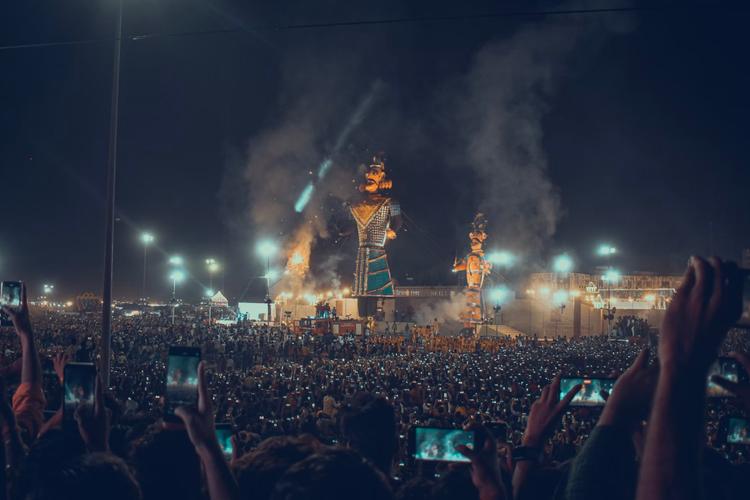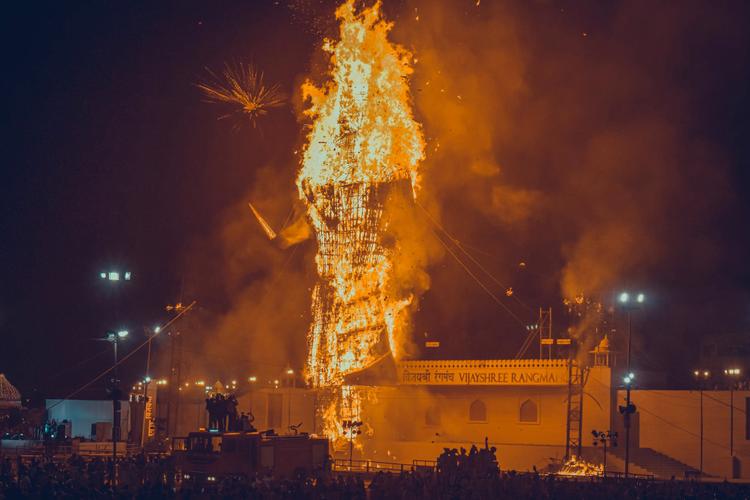Dussehra or Vijayadashami takes place on the Dashami of the Shukla Paksha in the Hindu lunar month of Ashwin. There are many stories behind the celebration of this day, including tales from the Ramayana and the Mahabharata. The different regions or parts of India observe this festival in many different ways, attributing the day to Ramayana, Mahabharata, or the worship of the Goddesses. A variety of gifts are also exchanged during the festivities that you can send gifts to Mumbai on this auspicious occasion. However, knowing the traditions and customs of this festival can help us to understand this event a lot more clearly. Hence, with the distinct regions India as well as the whole world celebrates this festival in various ways. If they are fond of chocolates, you can choose to send chocolates via chocolate delivery in Bangalore that one would love to receive.
The north Indian states observe Dussehra by its literal name, that is, ‘Dasha Hara’ or the day of victory over the ten-headed Ravana. The acts of Ram Lila are organized in many places that depict the various stages in Shri Ram’s life. Huge statues of Ravana, Meghnath, and Kumbhakaran are created out of fireworks on many large grounds. In the evening, actors dressed as Rama through fiery arrows at these idols that make them burst into flames and mark the end of evil.
The southern region celebrates Dussehra or Dasara as a day devoted to the praying of Goddesses Lakshmi, Saraswati, and Durga. Bommai Kolu or a step-like pedestal for the many forms of these Goddesses is arranged in many houses on the preceding days of Vijayadashami and taken down ritually on this day. Large processions of jewel-bedecked elephants carrying the idols of the Goddess Chamundeshwari. Effigies of the three demons are also burnt in a similar manner in this region as well while the whole region remains decorated and well-lit.
Vijayadashami in east India is the end of the grand celebration of Durga Puja which is a ten-day festival. It is believed that on this day Goddess Durga returns to heaven after her brief annual visit to Earth. In the western part of India, Dussehra comes the day after the end of Navratri, and idols of the Goddess are immersed in the river Ganga on this day. Dussehra is also observed here as the day when Rama defeated Ravana and it is also considered to be auspicious for a new beginning.
Dussehra is celebrated for a week in the hilly mountainous region of Kullu in Himachal Pradesh. Lord Raghunath is the deity who is worshipped in this area during the grand festival of Dussehra. There are many processions in the forms of palanquins that bear various deities of the Lord who is actually Vishnu. The whole of the valley is decorated with lights and flowers and the burning of effigies of Ravana is carried out here as well. Any festival or occasion is incomplete without exchanging gifts, so you can rely on our services of Hyderabad gift delivery that can help you deliver gifts in no time.
The island country of Sri Lanka is located in the south of India and the two countries are quite near to each other. Thus, this close proximity between these two countries has led to an exchange of customs and traditions. Sri Lanka is also important in the Dussehra celebrations because its historical name was Lanka which is considered to be the place where Ravana lived. Hence, the celebrations in this country are carried on to their full extent with the ritualistic burning of effigies. The inflammable statues of Ravana, Meghnad, and Kumbhkaran are burned by the arrows of a person dressed as Lord Ram. Worship of various deities like Goddess Durga and Saraswati is performed on this auspicious occasion.
Dussehra celebration in Nepal is carried out on a great scale and it is known here as Dashain. This festival is observed in this country for a period of fifteen days which are filled with fun and festivities. Though this is a continuous event, there are important days among this fortnight that are considered to be more relevant. The rituals and customs which encompass this festival on different days are Ghatasthapana Dashain, Fulpati, Maha Ashtami, Maha Navami, and Vijaya Dashami. Dashain is a celebration focussing on the defeat of the demon Mahishasura by Goddess Parvati or Durga. A special tika is applied on the foreheads of everyone by their elders and the plant Jamara is grown.
The country of Mauritius in Africa is an island that is filled with residents from all kinds of ethnic backgrounds. Thus, a number of Indians call this nation their home and they have brought with them their own cultural celebrations. Therefore, Dussehra celebrations are carried out here in a wholehearted and full-fledged manner. On this joyous day, effigies of the demon Ravana are burnt and the worship of Lord Rama takes place. The victory of Goddess Durga over Mahishasura is also an important aspect of this festival and as such Durga Puja is organized in several places. Various social events are also held and folk dances that are a part of these celebrations, like dandiya, are performed. With the service of online gift delivery in Chennai, you can send gifts and be a part of the grand celebrations.
The vast country of China is home to many Indians and the two can also be considered as neighbor countries. Thus, Dussehra is a very important festival for all the residents and it is celebrated amidst a lot of festivities. Huge effigies of Ravana are created to take the Dussehra celebration to its greatest extent. The ritualistic Ram Leela plays and the burning of the statuettes by Lord Ram are also performed. Apart from these, special pujas are also held in honor of Shri Ram and also the Goddess Durga. Floral decorations are an important part of these events that take the shape of community gatherings and gala events. To make it fun for your loved ones, you can go for online gift delivery in Kolkata that will help you send gifts online.
Some of these focus on the worship of Goddess Durga while others focus on the victories in Ramayana and Mahabharata. Thus, there are many ways of celebrating this grand event and different parts of India celebrate it in their own unique manner. You can look for online gift delivery in Delhi or to other parts of India in order to celebrate your loved ones. Send gifts to Ahmedabad or to India by availing our services in the best way possible.






